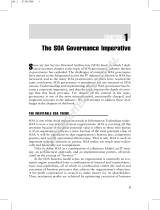Approved 4/26/2022
Page 5 of 7
13) Access to Management and Outside Advisors
Directors should have reasonable direct access to the Company’s officers and employees. Directors will use
judgment to ensure that contact with the Company’s officers or employees is not distracting to the
operation of the business and that such contact, if in writing, is copied to the CEO. At the invitation of the
Board, members of senior management recommended by the Chair may attend Board meetings or portions
thereof for the purpose of participating in discussions.
The Board encourages the officers to include other members of management in Board meetings, as
appropriate, who can provide additional insight into the items being discussed because of personal
involvement in these areas, and/or are managers that the officers believe should be given exposure to the
Board.
In performing its functions, the Board and each committee of the Board is entitled to rely on the advice,
reports and opinions of management, counsel, accountants, auditors and other expert advisors. The Board
shall have the authority to retain and approve the fees and retention terms of its outside advisors.
14) Assessing the Board’s Performance
At least annually, the Board will conduct a self-evaluation utilizing a Self-Appraisal Questionnaire and/or
other appropriate means developed by the Governance Committee and approved by the Board. The self-
evaluation will be designed to assess the Board's contribution as a whole and the contributions of the
committees of the Board and to specifically review areas in which the directors believe a better contribution
could be made. All directors are free to make suggestions on improvement of the Board’s practices at any
time and are encouraged to do so. The Governance Committee will manage the Board review process. In
addition, each of the Board's committees conducts an annual self-evaluation.
15) Ethics and Conflicts of Interest
The Board expects all directors, as well as officers and employees, to act ethically at all times and to adhere
to the Code, including the conflict of interest provisions included therein. Any waiver of the Code for
executive officers or directors may be made only by the Board and will be promptly disclosed, along with
the reasons therefore, as required by applicable law or stock market regulations.
16) Director Resignation Policy
Any director who is not elected by a majority of the votes cast is expected to tender his or her resignation
to the Governance Committee. The Governance Committee will recommend to the Board whether to
accept or reject the resignation offer, or whether other action should be taken. In determining whether to
recommend that the Board accept any resignation offer, the Governance Committee may consider all
factors that the Committee’s members believe are relevant.
The Board will act on the Governance Committee’s recommendation within 90 days following certification
of the election results. In deciding whether to accept the resignation offer, the Board will consider the
factors considered by the Governance Committee and any additional information and factors that the
Board believes to be relevant. If the Board accepts a director’s resignation offer pursuant to this process,
the Governance Committee will recommend to the Board and the Board will thereafter determine whether
to fill the vacancy or reduce the size of the Board. Any director who tenders his or her resignation pursuant









